The Captain Who Taught Generals
May 30, 2019 | Expert Insights
- We live in times of transformational change and the pace of that change is increasing. Over centuries, professional armed forces across nations have been at the forefront of these changes.
- What can corporates learn from military history so that they can benefit from the concept, ‘dare to disrupt’ as a strategy?
- Our series, ‘Dare to Disrupt’, draws lessons for businesses using illustrations from military and counter-terrorism history.
- This first article in the series, authored by Maj. Gen. Moni Chandi (Retd.), has in store some nuggets of wisdom from the experience of Captain D.H. Liddell Hart, a British Infantry officer who served in World War I.
Disruption and transformational change
When I was a child, my father invested in an Encyclopedia. Recently, I asked one of our younger employees, if they knew what an Encyclopedia was. The immediate response, I received was, “Sir, you mean Wikipedia!”. In 2006, I had a Reliance phone, with a fixed subscriber circle, no internet, no mail and no messaging. Then, the revolution of smartphones began. Today, we have a proliferation of automobiles, yet we wait in anticipation for the electric car with autonomous driving. We live in times of transformational change and the pace of that change is increasing. Professional armed forces across nations have been at the forefront of these changes. Transformational change in the armed forces was recognized as early as the last decade of the 20th century and called the ‘Revolution in Military Affairs (RMA)'.
Recently, I was invited by Schneider Electric to speak at their conclave on the value, ‘Dare to Disrupt’. Many special forces draw inspiration from similar mottos. For example, the special forces of the United Kingdom, the Special Air Service (SAS), has the motto, ‘Who Dares Wins’. India’s elite counter-terrorist unit, 51 Special Action Group has the motto, ‘Sahas ki Vijay’, which translates approximately as, victory through courage. It is appropriate, in the age of transformational change, that Schneider Electric chose an almost military value to inspire employees.
In the course of my interaction with Schneider Electric, I drew illustrations from military history which reinforced the value, ‘Dare to Disrupt’. This is the first of the six illustrations I discussed.
Disruptions in the conduct of warfare
Generations of warfare
In 1989, the US Government commissioned a study on warfare. Willian S. Lind, one of the scholar-historians in the group carrying out the study, coined the term ‘Generations of Warfare’, to explain its revolutionary changes. The group suggested that there were four generations of war. In the 1st Generation Warfare, armies were pitted against one another and the general with the larger army was expected to win. Wars of ancient times, such as during the Egyptian, Mesopotamian, Greek and Roman civilizations, fell into this category. Perhaps, our Mahabharata also falls in this category.
The 2nd Generation Warfare began with the introduction of the machine gun in the battlefield and the artillery field gun too came of age. These two weapons were very efficient killing machines and they changed the conduct of war. A good example of the 2nd Generation War is the 1st World War, which was fought between 1914 and 1918, mainly in Europe. The 2nd Generation Warfare was fought mainly from trenches and if you exposed yourself, the chances were, you would get shot. Then came the advent of the tank, bringing mobility to the battlefield and revolutionizing the character of war, yet again. This was called the 3rd Generation Warfare and it is here that I draw my first illustration of daring to disrupt.
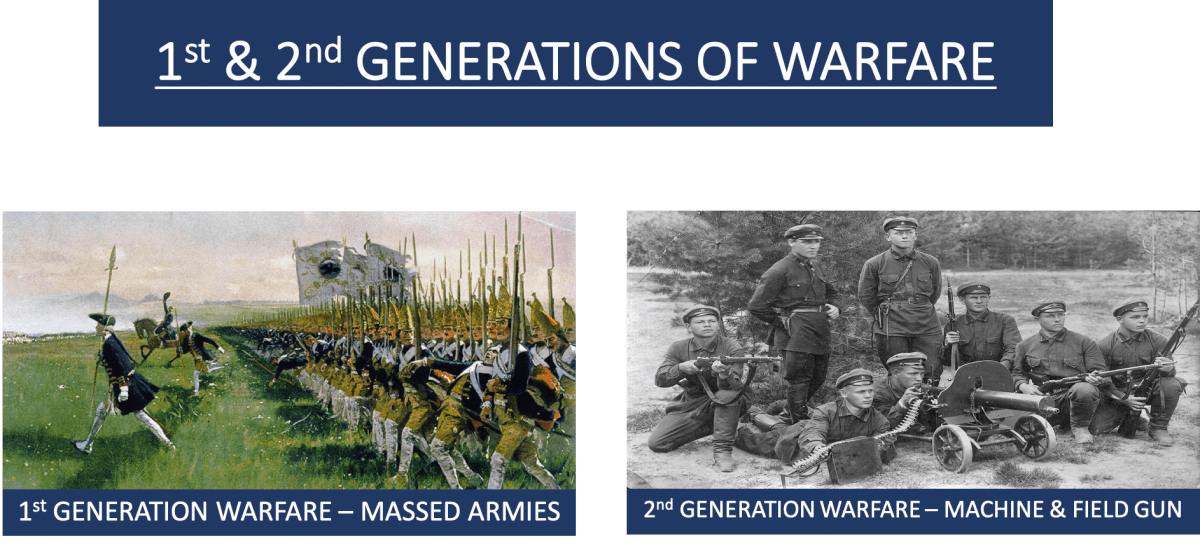
The futility of the frontal assault
Captain D.H. Liddell Hart (1895 – 1970) was a British Infantry officer, belonging to the Light Yorkshire Regiment and he served during the 1st World War. During the Long War as it was called, he was injured on multiple occasions, even getting gassed during the Battle of Somme. After the war, he turned scholar, writing several papers and books. He is best known for the doctrine of the Indirect Approach. His central argument was, ‘the frontal attack was bound to fail and be expensive in casualties’. By frontal attack, he meant taking an objective along the direct and most obvious approach. The direct-approach invariably passed through minefields and mines are cruel weapons designed to maim soldiers, not kill them. The enemy would open up on the attacking troops with all weapons at his disposal - mortars, artillery, small arms and grenades. The attacking troops fell like pennies and when the attack failed, reserve companies were called in. This cycle would continue for days on end until, either the attacker had no more troops or the defender could fight no more because he had no ammunition. That is why Liddell Hart said the frontal assault was bound to fail and be expensive in terms of casualties. As an alternative, Liddell Hart suggested the ‘indirect approach’.
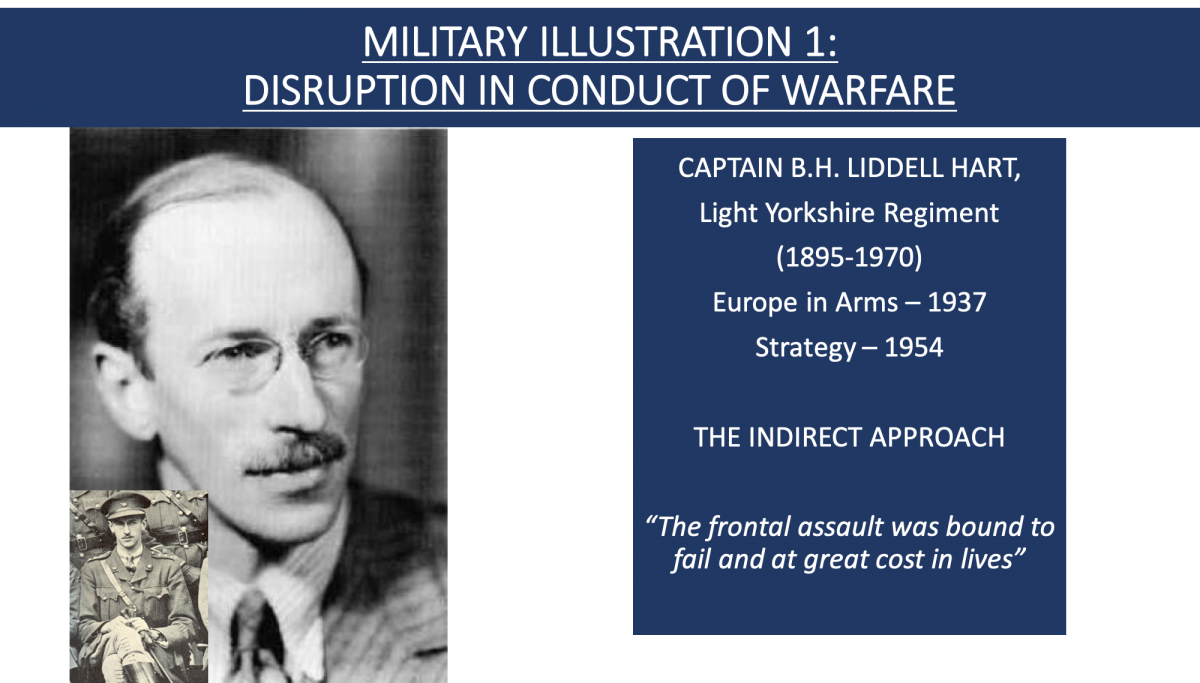
Disruption in the conduct of warfare: 'The Indirect Approach'
3rd Generation Warfare
The Indirect approach
The Indirect approach, attacks would be led by tanks, who could overrun enemy positions. Infantry would be carried to the objective, in protected vehicles and Air Force bombers would degrade enemy defences before being tackled by ground forces. Further, combat formations would be grouped together under a single commander with objectives, well to the rear of the enemy. How did the tactics of the ‘Indirect Approach’ affect troops on the ground? Firstly, the prepared positions of the enemy would be ‘turned’, forcing them to face an unexpected threat from a new direction. Secondly, to confront the enemy in the rear, soldiers would have to leave their prepared positions and confront the enemy from unprepared positions. Thirdly, in the fog of war, such changes are likely to affect the morale of troops, forcing them to believe they have only two alternatives – annihilation or surrender.
The British perspective
Such revolutionary thoughts about the 3rd Generation Warfare may not have gone down well with the conventional British Army and Liddell Hart's Army career was over in the relatively low rank of Captain. However, to the credit of the British system, some people did take note of Liddell Hart's views, notably Neville Chamberlain who at that time was the Chancellor and would later become PM of UK. However, on 01 Sep 1939 Adolf Hitler invaded Poland and the UK and France declared war on Germany. A War Cabinet was formed, who immediately dismissed Liddell Hart's modernization plans and a British Expeditionary Force was formed and dispatched to the Continent to defend Norway, Poland and France, in much the same manner as in the 1st World War.
The German perspective
During the same two decades (1918 to 1939) and between the world wars, Germany developed the tactics of ‘Blitzkrieg’ or Lightning War. Multi-arm combat formations, comprising tanks, infantry in armoured carriers, motorized artillery, parachute infantry and dive bombers were grouped under independent commanders with different objectives. Operations were developed on narrow frontages and easily broke through the linear defences of the Maginot Line. In six weeks from 10 May 1940 to 25 June 1940, Germany captured France, Belgium Luxemburg and the Netherlands. The British Expeditionary Force after being overrun was forced to withdraw to the beaches of Dunkirk from where they were extricated at great cost, losing a fifth of their force and all their heavy equipment.
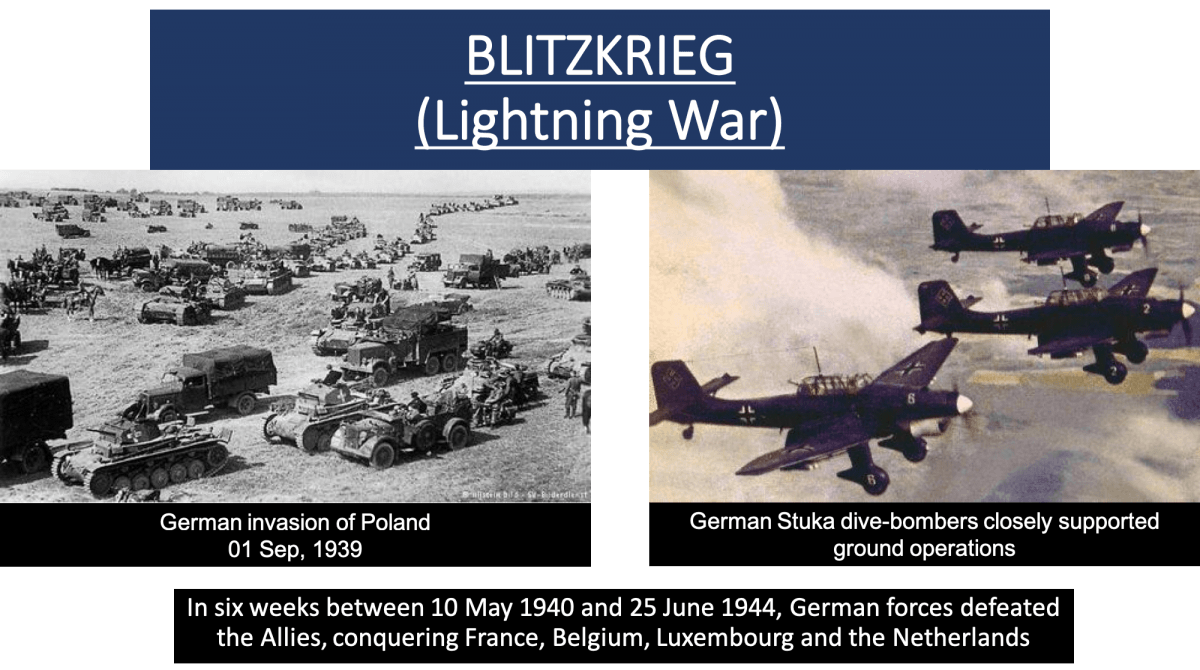
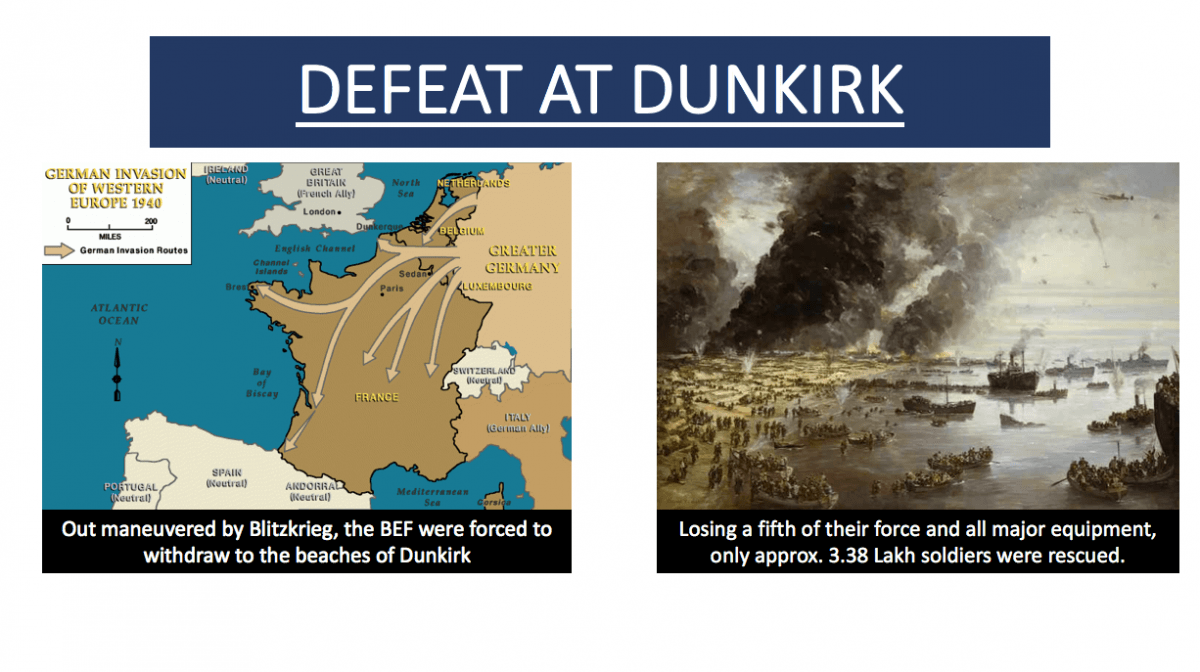
Lessons
Though Germany went on to lose the war, its tactics of Blitzkrieg and the decisive capture of continental Europe brought the next revolution in warfare described as 3rd Generation Warfare. After the war, many German Generals conceded that in developing the tactics of Blitzkrieg, they were influenced by the writings of Liddell Hart and the Doctrine of the Indirect Approach. Captain Liddell Hart certainly dared to disrupt and made a contribution to the development of 3rd Generation Warfare.
As a lesson, it may be prudent to remember that when you dare to disrupt, you should be prepared for opposition, particularly from home turf. Also, when you dare to disrupt, your enemies may learn more from you than your own people.
In 1967, Queen Elizabeth made Captain Liddell Hart a Knight Bachelor and President John F Kennedy famously called him, the Captain who teaches Generals.
Authored by Major General Moni Chandi (Retd), Chief Strategic Officer, Synergia Foundation
Image courtesy for the first image: The Battle of Somme 1916, World War I; source: Wikimedia Commons


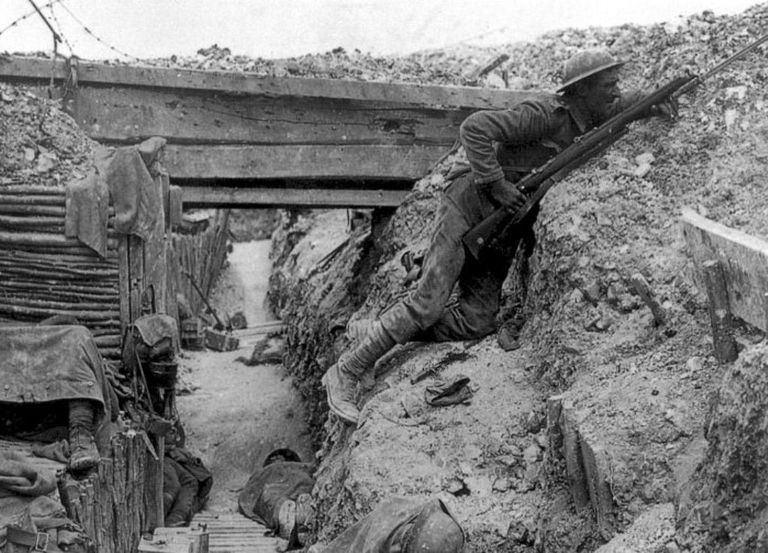
Comments